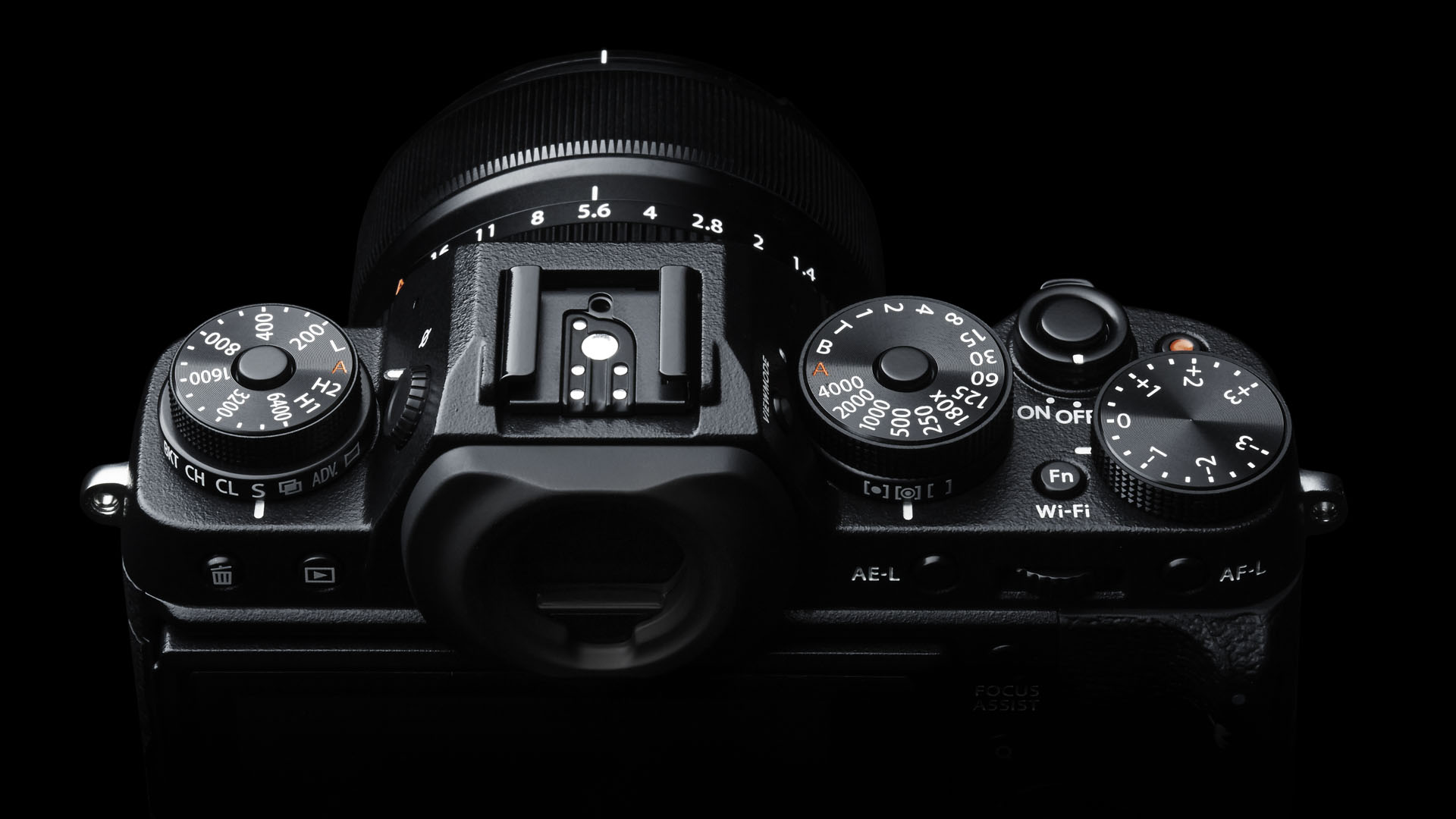Why you can trust TechRadar
We shoot a specially designed chart in carefully controlled conditions and the resulting images are analysed using DXO Analyzer software to generate the data to produce the graphs below.
A high signal to noise ratio (SNR) indicates a cleaner and better quality image.
For more more details on how to interpret our test data, check out our full explanation of our noise and dynamic range tests.
Here we compare the Fuji X-T1 with the Fuji X-E2, Panasonic GX7, Olympus OM-D E-M1, Canon 70D and Nikon D7100.
JPEG signal to noise ratio
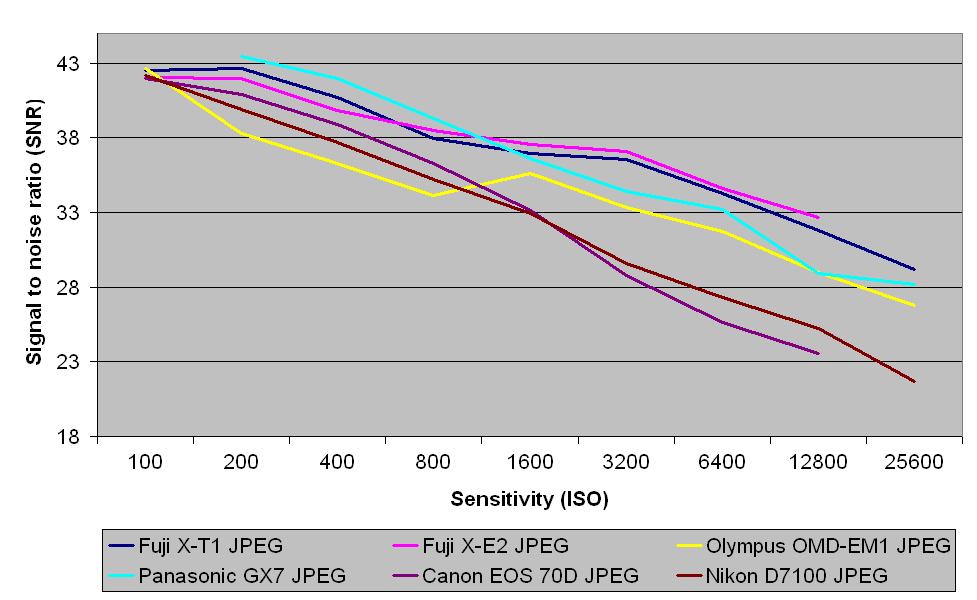
The X-T1 performs very well for signal to noise ratio indicating that images have a relatively low level of noise.
As we would expect, it produces almost identical results to the X-E2, with which it shares a sensor. It's fairly closely matched to the Panasonic GX7 at the lower end of the sensitivity scale, beating it at the top end of the run. It beats all of the other cameras on the test, but it is fairly closely matched to the Olympus OMD-EM1. The DSLRs in the test, the Canon EOS 70D and the Nikon D7100 sit significantly below the X-T1 at the higher end of the scale.
Raw signal to noise ratio
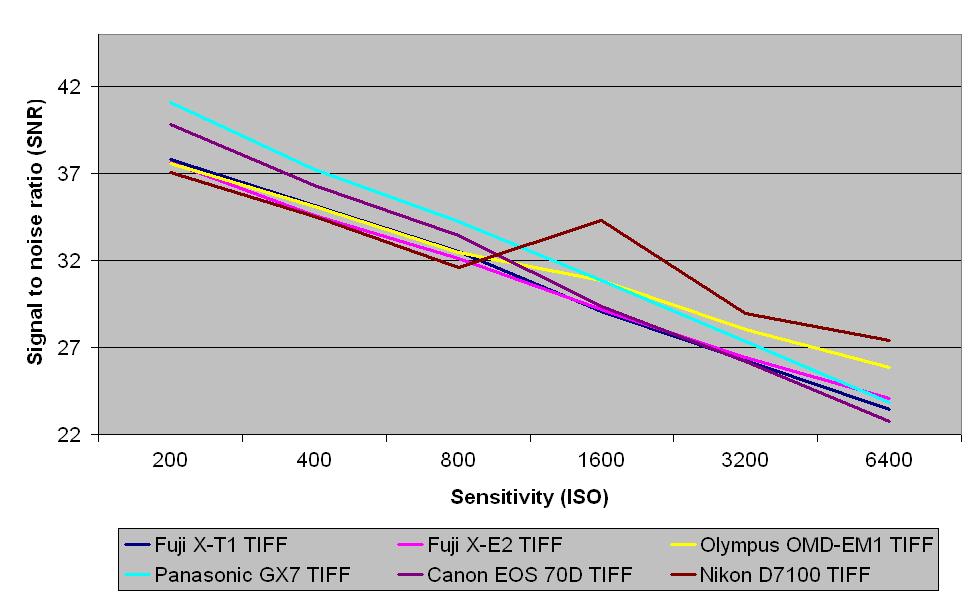
As you can see, all of the cameras in this test put in a very similar performance for raw signal to noise ratio performance. However, the Panasonic GX7 is - just about - the top performer.
JPEG dynamic range
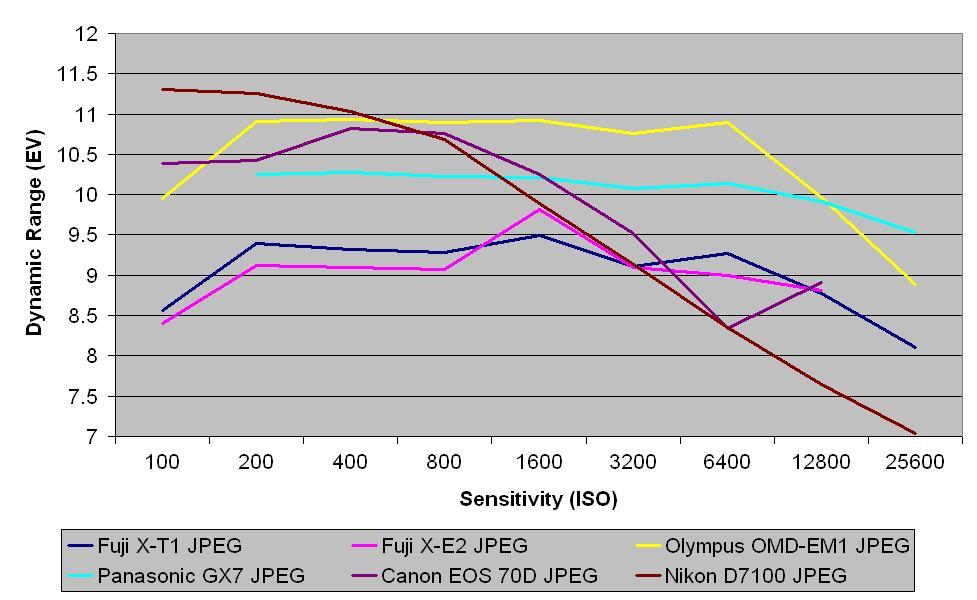
As already mentioned in the main body of the review, JPEG images from the X-T1 have quite a low dynamic range, and this is reflected by the labs results here. As we'd expect, again, it's an almost identical performance to the X-E2. Although the other cameras appear to put in a better performance, it's also an indication of the pleasant saturation and contrast in images straight from the X-T1, which give them a more pleasing, if sometimes less accurate, look.
Raw dynamic range
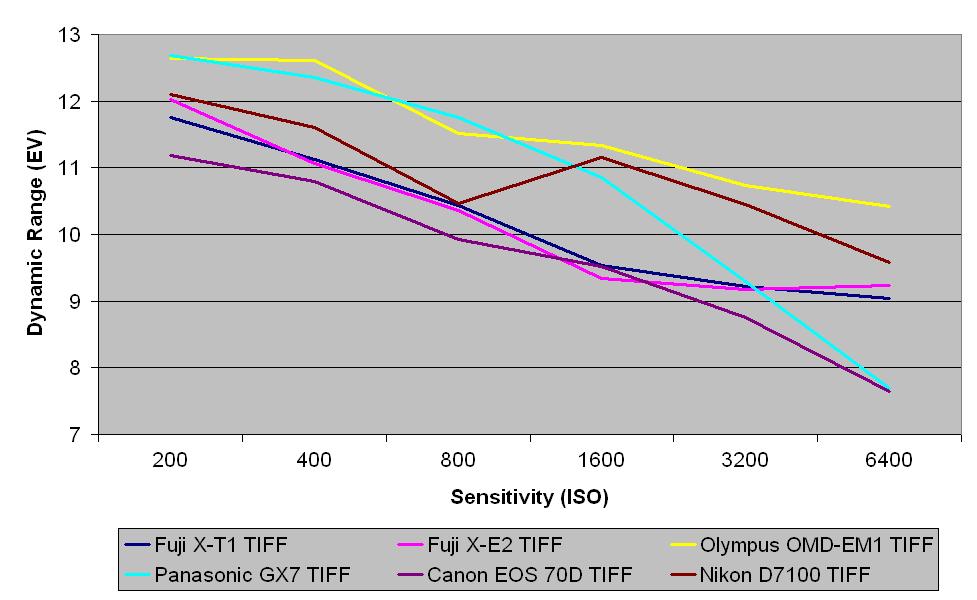
Again, the X-T1 is almost identical to the X-E2 on this chart. It is also beaten by most of the other cameras on the test, aside from the Canon EOS 70D, of which it is very similar. We suspect that when the X-T1's raw files are compatible with Adobe Camera Raw we will find the they have greater measurable dynamic range - just as we did with the Fuji X-E2.
Current page: Noise and dynamic range
Prev Page Image quality and resolution Next Page Sensitivity and noise imagesThe TechRadar hive mind. The Megazord. The Voltron. When our powers combine, we become 'TECHRADAR STAFF'. You'll usually see this author name when the entire team has collaborated on a project or an article, whether that's a run-down ranking of our favorite Marvel films, or a round-up of all the coolest things we've collectively seen at annual tech shows like CES and MWC. We are one.
